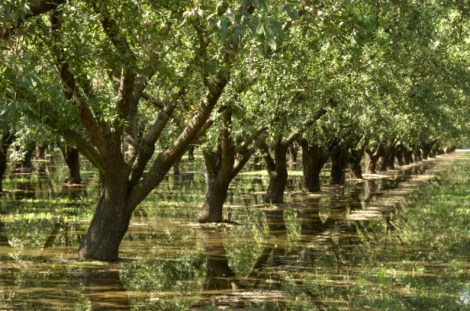Over the past few years, farmland values have ballooned nationwide. In California, that rise has not only changed the economics of Central Valley farming, but the crops themselves.
A weak dollar has pushed up demand for exports of California’s goods to Asia, especially almonds, pistachios, and walnuts. In 2011, almonds beat out California’s iconic grapes as the state’s second top commodity, at $3.9 billion a year. Nut-growing farmland value has grown 15 to 20 percent over the last two years, and it’s still consistently selling for 10-20 percent above asking price.

In the economically troubled Central Valley, this is the kind of market that makes short-sighted investors drool and long-view economists wince. From the Associated Press:
Investors both foreign and domestic have taken notice, buying up farmland and driving up agricultural land values in a region with some of the highest residential foreclosure rates.
California’s almond industry, which grows about 80 percent of the global almond supply and 100 percent of the domestic supply, saw the most dramatic growth powered by strong demand from new money-spending middle classes in India and China. The growth has prompted a rush for almond-growing land and pushed almond land values through the roof …
Revenues for almonds and walnuts increased by 30 percent between 2010 and 2011, and revenues for grapes rose by 20 percent, according to the USDA. California’s agricultural exports during that time grew by more than $3 billion …
In Fresno County, almond land was valued at up to $18,000 per acre in 2012, and pistachio land at up to $25,000 per acre. That’s higher than citrus, grape, or tree fruit land — and much higher than the $7,200 average per acre farm real estate value in California last year, according to the USDA.
This farm boom is happening at the same time that California state is trying to figure out how to snag all the farmland it needs to turn into high-speed train tracks. The more lucrative the farming and the more expensive the land, the dirtier the fight over high-speed rail is likely to get. If California ends up using its power of eminent domain on these fancy farms, things could get truly nutty.



